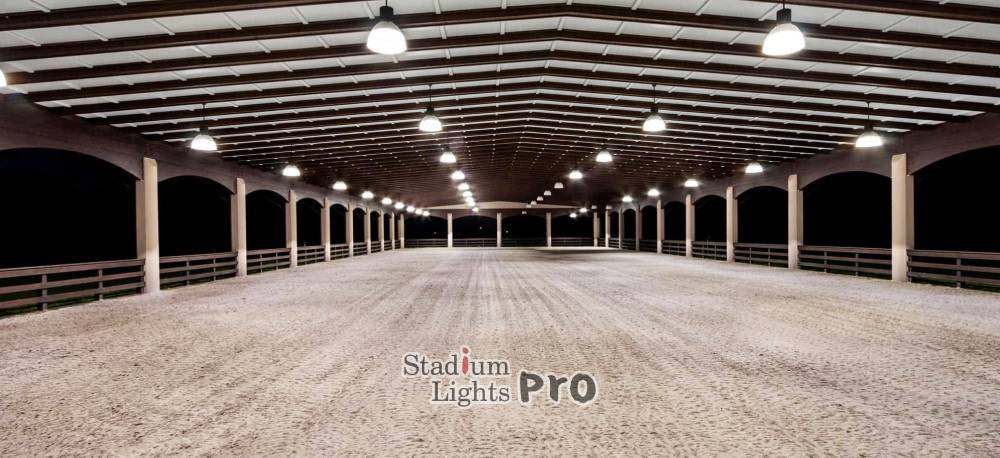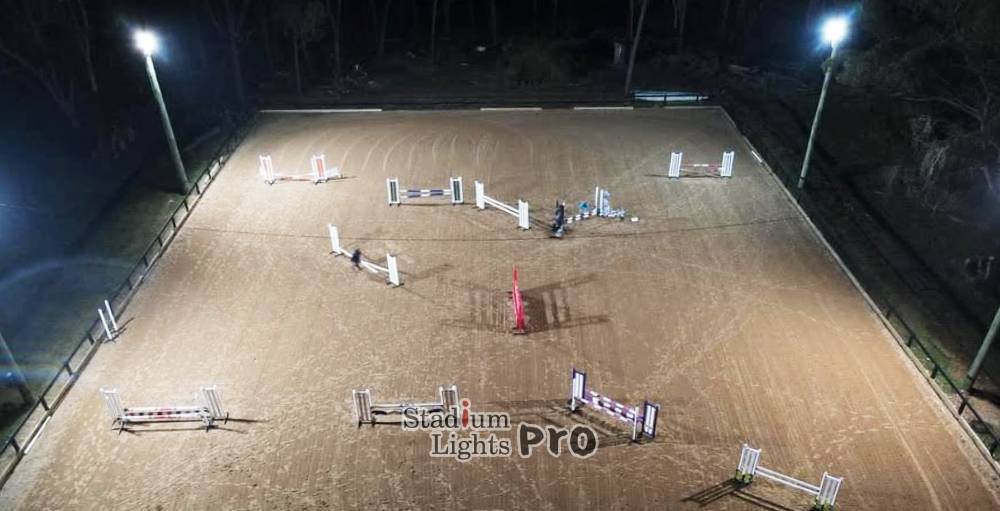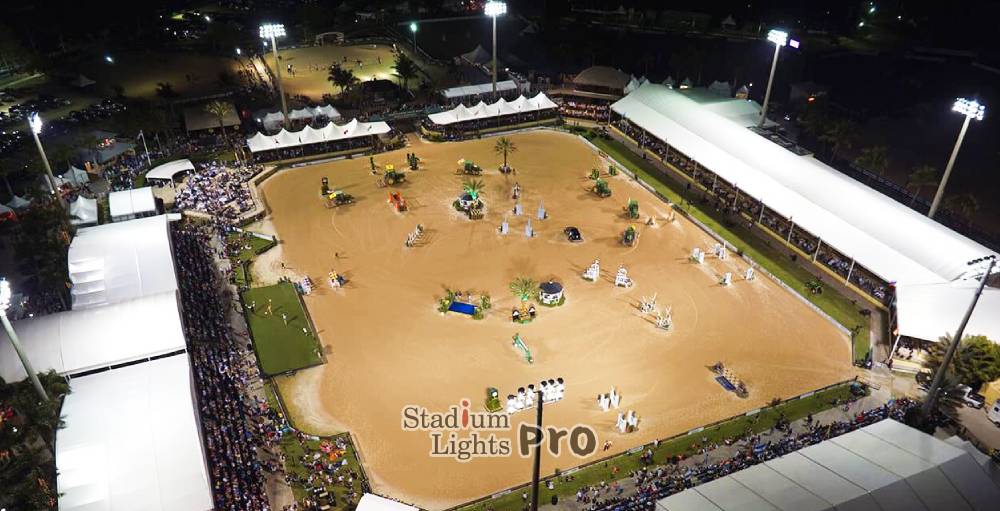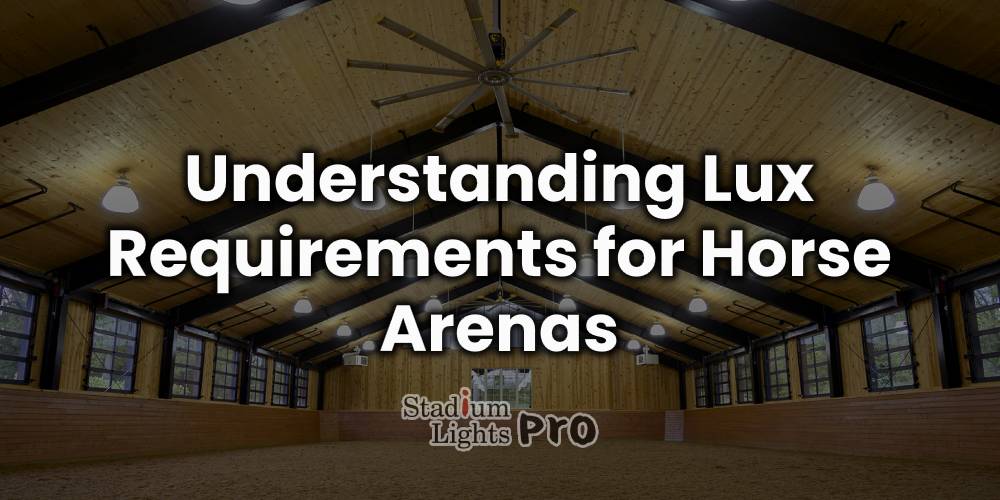When it comes to lighting a horse arena, proper illumination is not just about visibility but also about creating the right environment for both horses and riders. Ensuring the space is adequately lit is essential for safety, performance, and comfort. One of the main metrics used to measure lighting intensity is Lux, a unit that quantifies the amount of light falling on a surface. This measurement helps determine how much light is needed for various activities, from training to competitions. But what does it truly mean for a horse arena, and how can we best assess the lux requirements?
Table of Contents
ToggleWhat is Lux?
Lux is a unit of measurement used to describe the intensity of light. Unlike other lighting units, Lux is directly related to how much light hits a given area. The more Lux, the brighter the environment, but how much is too much or too little? For horse arenas, the level of Lux influences not just the visual clarity of the space but also how horses behave and how safely they can be trained or ridden.
Lux is measured as lumens per square meter (lm/m²), and different activities require varying levels of light. For example, riding requires moderate lighting, while preparing for a competition or riding at night may demand brighter illumination to maintain clarity and safety.

Factors that Influence Lux Requirements in a Horse Arena
Several factors contribute to determining the appropriate Lux level for a horse arena. These factors must be carefully considered, as they influence both the functionality of the space and the comfort of the users.
Arena Size and Shape
The size of the arena plays a significant role in the lux levels needed. A larger arena requires more lighting fixtures or higher-intensity lights to ensure uniform light distribution. Smaller arenas may require fewer or less intense light sources. The shape of the arena can also affect the lighting plan, as irregularly shaped areas may have shadows or spots that need to be addressed for optimal illumination.
Type of Activity
The nature of the activity taking place in the arena determines how much light is necessary. A general training session for horses may require a lower Lux level compared to a competition or event, which requires more precise and clear lighting. For riding, the light must be bright enough for visibility but not so overpowering as to cause glare.
Time of Day
Lighting requirements also depend on the time of day. While natural daylight is typically enough for daytime activities, during early mornings, evenings, or cloudy days, artificial lighting becomes essential. The level of natural light available can also affect how much additional lighting is needed to meet the desired Lux levels.
Arena Surface
The surface of the arena, whether it is dirt, sand, or another material, also affects the lighting. Some surfaces absorb more light, while others reflect it, which may require adjustments in the lighting setup. For instance, an arena with a reflective surface may need less lighting than one with a dark, absorptive surface.
Lighting Fixtures
The type of lighting fixtures used can affect how efficiently Lux is distributed throughout the arena. LED lights, for example, are becoming increasingly popular due to their energy efficiency, longevity, and ability to provide a consistent light output. On the other hand, traditional incandescent or halogen bulbs may not provide as much uniformity or energy efficiency as newer lighting technologies.

Determining Lux Levels for Different Horse Arena Activities
| Activity | Recommended Lux Level |
|---|---|
| General Riding and Training | 150 – 200 Lux |
| Competitions and Events | 300 – 500 Lux |
| Night Riding and Practice | 200 – 300 Lux |
| Training for Specific Disciplines | 300 – 400 Lux |
To ensure lighting is adequate in a horse arena, it is important to match Lux levels to the specific activity. The required Lux levels vary based on the type of event, size of the arena, and the desired level of detail for visibility. Below is a breakdown of the recommended Lux for different activities.
General Riding and Training
For general riding and training, the light needs to be bright enough for riders to see clearly without creating a harsh or uncomfortable environment. Typically, 150 to 200 Lux is sufficient for these activities. This range of lighting provides enough visibility to ensure that riders can see obstacles, the horse’s movements, and the surrounding environment without over-illuminating the space. These Lux levels also help maintain a comfortable atmosphere for both horses and riders, allowing for focused practice and smoother movement within the arena.
Competitions and Events

When preparing for larger-scale competitions or events, higher Lux levels are required to ensure no details are missed by judges, spectators, or competitors. Competition arenas typically require more precise lighting, and the Lux levels generally range from 300 to 500 Lux, depending on the event’s scope and the arena’s size. This lighting is designed to eliminate any shadowy areas or low-visibility spots, which is critical for events such as jumping, dressage, or show riding, where clear sightlines and evenly lit spaces are important for safety and performance.
For example, dressage competitions, where precision is key, may require Lux levels toward the higher end of this range (400-500 Lux), as the arena needs to be lit uniformly for judges to evaluate the performance accurately. In larger arenas, achieving even coverage at higher Lux levels ensures no area is too dim, which is important for both spectators and competitors.
Night Riding and Practice
For night riding or evening practice, a slightly higher Lux level may be needed to compensate for the absence of natural light. During these sessions, it’s crucial to have consistent, glare-free lighting to maintain safety and visibility. Lux levels typically range from 200 to 300 Lux for these situations. The goal is to ensure there is enough illumination for both riders and horses to navigate the arena comfortably and safely, with particular attention given to avoiding spots that are overly dark or glaringly bright.
Nighttime riding can be challenging, and the arena must be lit in a way that prevents riders from experiencing eye strain or difficulty seeing obstacles. These Lux levels allow for good visual clarity without creating excessive brightness that could startle the horses or cause discomfort.
Training for Specific Disciplines
Different equestrian disciplines have unique lighting requirements due to the varying nature of the activities. Training for specific disciplines like show jumping or dressage may require more intense lighting to ensure clarity and visibility. Lux levels in these types of training typically range from 300 to 400 Lux, with a goal of creating an evenly lit environment to avoid shadows that could disrupt performance.
In show jumping, where riders must clear obstacles, it is especially important that the entire arena is lit uniformly. Shadows in any part of the arena could create uncertainty for both horse and rider, potentially leading to misjudgments or accidents. Similarly, in dressage, where precise movements are judged, higher Lux levels allow the judges to view the performance with maximum clarity.
Achieving the Right Lux Level in a Horse Arena
Proper lighting setup and equipment are fundamental in achieving the desired Lux levels for any activity within the arena. Achieving the correct Lux involves the layout of fixtures, choice of lighting technology, and maintenance of the system to ensure consistent brightness throughout.
Lighting Layout and Placement
The arrangement and placement of lighting fixtures play a pivotal role in achieving uniform illumination across the arena. To avoid areas that are overly dark or excessively bright, the lights should be positioned to provide even coverage. Typically, lights should be placed above the arena, and in larger spaces, perimeter lighting may be added to support the central fixtures.
The placement of lights should focus on eliminating shadows, especially in areas where horses are performing. For jumping, the placement of lights should ensure no shadows fall on jumps or along the path the horse will take. In dressage arenas, lighting should avoid creating shadows around the corners or along the arena’s edges, where riders may need clear visual lines.
For larger arenas, it may be necessary to use more than one type of lighting system, combining overhead and perimeter fixtures, to achieve balanced lighting. Additionally, lighting near the ground level can help illuminate edges and prevent dark corners that could create hazards or impair visibility.
Types of Lighting Fixtures
The selection of lighting fixtures impacts both the quality of light and the energy efficiency of the arena. LED lighting has become a preferred choice due to its long lifespan, energy efficiency, and ability to provide high-quality, consistent lighting. LED lights are highly adaptable and can be positioned in a way that provides even illumination across the arena.
Halogen lights or metal halide fixtures were commonly used in the past but are less efficient and have shorter lifespans compared to LEDs. These lights may still be used in certain situations but are generally being replaced by more efficient lighting technologies.
LEDs also offer the advantage of producing less heat and providing a more focused light beam, which helps direct the light exactly where it is needed without unnecessary dispersion. Their use can lower overall energy consumption while maintaining high-quality lighting that meets specific Lux requirements.
Avoiding Glare
One of the challenges in lighting a horse arena is avoiding glare, which can be unsettling for both horses and riders. Glare occurs when lighting is too harsh or is positioned improperly, creating direct reflections or overly bright areas that can impair visibility.
To avoid glare, it’s important to carefully angle the lighting fixtures. Positioning the lights at an appropriate height and using fixtures with diffusers or filters can help reduce glare and ensure the light is evenly distributed. Light fixtures should also be shielded to prevent direct light from shining into the riders’ eyes or the horses’ line of sight.
In situations where the lighting is intense, such as during competitions or night practice, it is important to balance the brightness levels across the entire arena. The goal should be to create a comfortable, glare-free environment that allows riders and horses to focus without distractions from overly bright spots.
Lighting Maintenance
Lighting maintenance is an important part of ensuring that the arena continues to meet the desired Lux levels over time. As lighting systems age, bulbs can lose their brightness, and fixtures may shift or misalign. Routine inspections should be conducted to ensure that all lights are working properly and that any changes in light intensity are addressed.
It is essential to clean the light fixtures regularly, as dirt and dust can accumulate and reduce the amount of light they emit. Misaligned or dirty lights can lead to uneven illumination, resulting in dark spots or glare. A regular check of all fixtures, wiring, and bulbs will help maintain the proper Lux level in the arena, ensuring consistent lighting for every session or event.
In addition to cleaning and aligning fixtures, it is also necessary to replace any bulbs or lighting elements that have become dim or malfunctioning. Regular maintenance ensures that the lighting remains reliable and effective, whether for everyday training or important competitions.
Maintaining an even distribution of light throughout the arena prevents any unexpected lighting failures that could compromise safety or the overall experience for both horses and riders.
How Lux Affects Horses in the Arena
The lighting in a horse arena does more than just impact visibility; it also influences the behavior and comfort of horses. Horses are sensitive to light, and too much brightness can cause them to feel unsettled. A well-lit arena that provides adequate but not overpowering illumination allows horses to move naturally and with confidence.
Bright lighting can sometimes startle horses, causing them to behave nervously or erratically. Proper lighting design takes this into consideration and ensures that the light is neither too dim nor overly intense. Providing a controlled and balanced lighting environment helps horses focus on their training or competition without distractions from uncomfortable light conditions.
Final Considerations
Choosing the right Lux level for a horse arena is a multi-faceted decision that involves careful consideration of a variety of factors. The size of the arena, the type of activity, the available natural light, and the type of lighting fixtures all come together to determine the best lighting setup. By understanding the needs of both riders and horses, and by considering the lux requirements for different activities, arena owners can create a safe, comfortable, and effective space for training and competition. Proper lighting ensures that the arena serves its purpose while fostering a positive experience for both horses and their riders.

